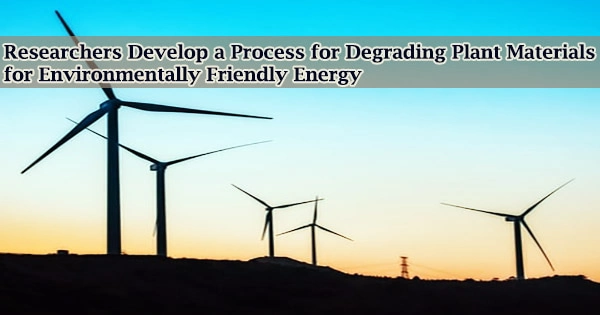The need for researchers to discover routes to products and fuels that are truly renewable has never been stronger given the rise in energy costs and the quickly emerging effects of burning fossil fuels on the global climate.
“We use 20 million barrels of oil a day in the U.S.; that’s about a fifth of the world’s usage,” said Ned Jackson, a professor of organic chemistry in the College of Natural Science at Michigan State University.
“All our liquid fuels and nearly all of our manufactured materials, from gasoline and gallon jugs to countertops and clothes, start with petroleum crude oil.”
It is vital to provide the means to switch from fossil fuels to renewable sources of carbon for all of these aspects of daily living.
But according to the most optimistic projections, Jackson said, “What we could harvest annually from biomass in the U.S. only has about two-thirds as much carbon in it as the crude oil that the nation uses.”
A chemical technique has been devised by Jackson and Yuting Zhao, a former graduate student of Jackson’s who is currently a postdoctoral researcher at the University of Illinois, to allow electricity and water to dissolve biomass, or plant matter, by breaking the strong chemical bonds.
One of the things that drives us is the idea that our main use of petroleum is fuel that is burned to produce energy, adding greenhouse gases to the atmosphere. The new science is a step toward extracting useful carbon compounds to displace some fraction of the fossil petroleum that we use today.
Professor Ned Jackson
Lignin, a carbon-rich component of biomass that is typically discarded or simply burned as a byproduct of creating paper, could be subjected to this “electrocatalytic” process. This novel device may also be used to eliminate toxins in the environment.
On April 19, 2022, the study appeared in the journal Nature Communications. Unlocking the carbon and energy trapped in biomass is a global goal in order to make biomass a viable alternative to petroleum.
But in order to transform this intricate, difficult, low-energy material into the constituent parts of fuels and goods, new, effective techniques are required. Tools are specifically required to separate the potent chemical bonds holding it together while preserving and even enhancing the majority of the carbon and energy content.
“One of the things that drives us is the idea that our main use of petroleum is fuel that is burned to produce energy, adding greenhouse gases to the atmosphere,” Jackson said. “The new science is a step toward extracting useful carbon compounds to displace some fraction of the fossil petroleum that we use today.”
Parts of this research were supported by the Great Lakes Bioenergy Research Center (GLBRC).
Over 400 scientists, engineers, students, and employees from organizations like MSU participate in the GLBRC, which is directed by the University of Wisconsin-Madison. The development of sustainable biofuels is one of GLBRC’s objectives.





